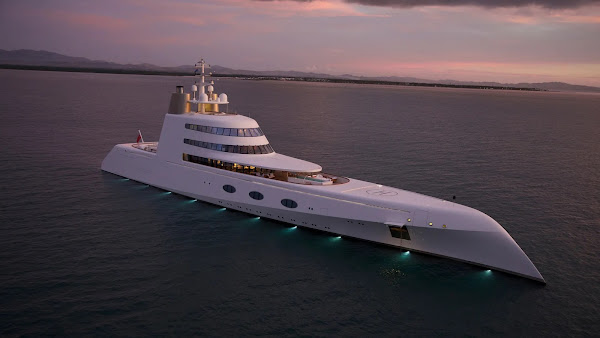For the moment, a gigayacht is the most expensive item that our species has figured out how to own. In 2019, the hedge-fund billionaire Ken Griffin bought a quadruplex on Central Park South for two hundred and forty million dollars, the highest price ever paid for a home in America. In May, an unknown buyer spent about a hundred and ninety-five million on an Andy Warhol silk-screen portrait of Marilyn Monroe. In luxury-yacht terms, those are ordinary numbers.
There are a lot of boats in build well over two hundred and fifty million dollars, Jamie Edmiston, a broker in Monaco and London, told me. His buyers are getting younger and more inclined to spend long stretches at sea.High-speed Internet, telephony, modern communications have made working easier, he said.Plus, people made a lot more money earlier in life.
Thorstein Veblen, the economist who published “The Theory of the Leisure Class”, in 1899, argued that the power of “conspicuous consumption” sprang not from artful finery but from sheer needlessness.
In order to be reputable, he wrote,it must be wasteful.In the yachting world, stories circulate about exotic deliveries by helicopter or seaplane: Dom Pérignon, bagels from Zabar’s, sex workers, a rare melon from the island of Hokkaido. The industry excels at selling you things that you didn’t know you needed. When you flip through the yachting press, it’s easy to wonder how you’ve gone this long without a personal submarine, or a cryosauna that “blasts you with cold” down to minus one hundred and ten degrees Celsius, or the full menagerie of “exclusive leathers”, such as eel and stingray.But these shrines to excess capital exist in a conditional state of visibility: they are meant to be unmistakable to a slender stratum of society—and all but unseen by everyone else.
Evan Osnos
If I ever, by some vanishingly unlikely chance, become immensely rich, I can’t decide if I would prefer to own a private island, or a superyacht. The island would offer more living space and stability. A yacht on the other hand gives you more freedom: freedom to travel to nearly every corner of the world; freedom to escape sanctions and taxes by sailing into international waters and friendly ports; freedom to avoid extreme weather and the damages caused by global warming.

a giant finger pointing at youand
one of the most hideous vessels ever to sail, but it marked a new prominence for Russian money at sea. Today, post-Soviet élites are thought to own a fifth of the world’s gigayachts.
In a sense, life on a luxury yacht represent the best parts of the seasteading vision, without the hard aspects of building a brand new society from scratch and dealing with other people’s problems; just a ruling family and their retinue of servants tending to their every needs and tiniest whims. And this emphasizes just how disconnected the current elite – including, among others, former US president Barack Obama – is from the rest of world; living in their own realms, shielded from the worries and troubles of the rest of society, meeting in private on their fancy yachts to decide matters that will impact millions of people, without any checks or accountability…
Some designs revolve around a single piece of art. The most expensive painting ever sold, Leonardo da Vinci’s “Salvator Mundi”, reportedly was hung on the Saudi crown prince Mohammed bin Salman’s four-hundred-and-thirty-nine-foot yacht Serene, after the Louvre rejected a Saudi demand that it hang next to the “Mona Lisa”. Art conservators blanched at the risks that excess humidity and fluctuating temperatures could pose to a five-hundred-year-old painting. Often, collectors who want to display masterpieces at sea commission replicas.
Post a Comment